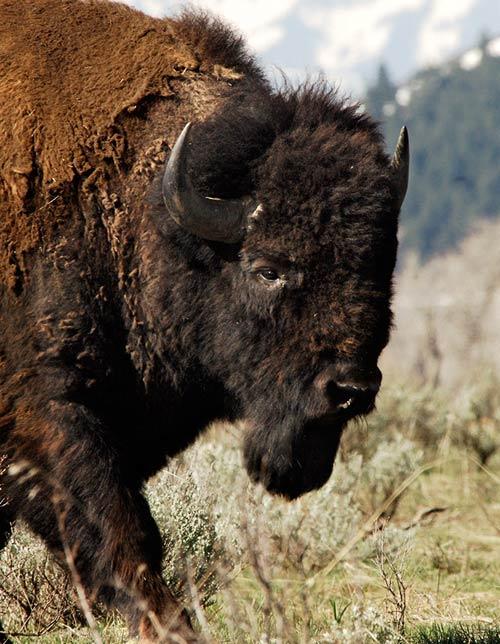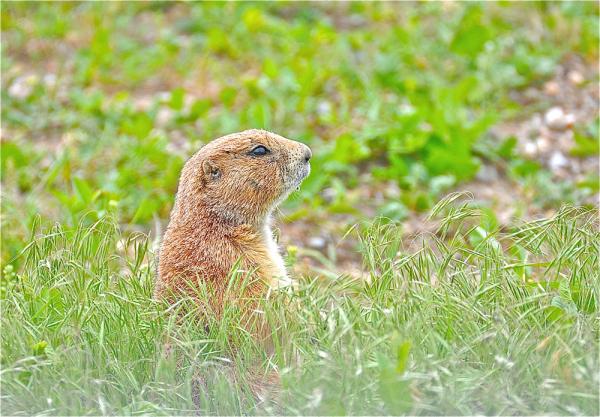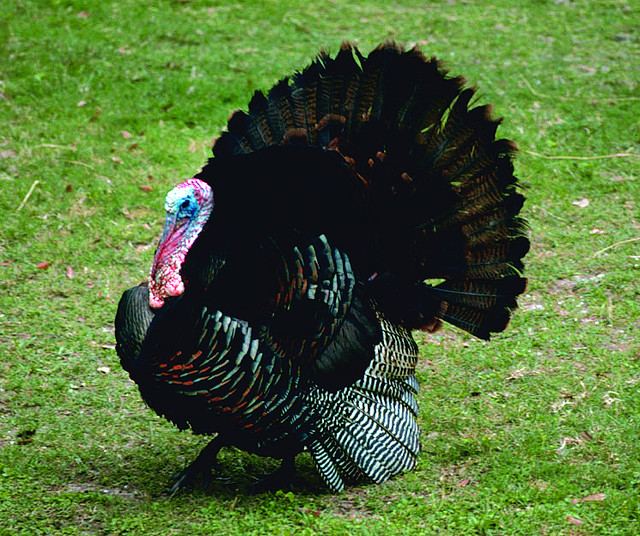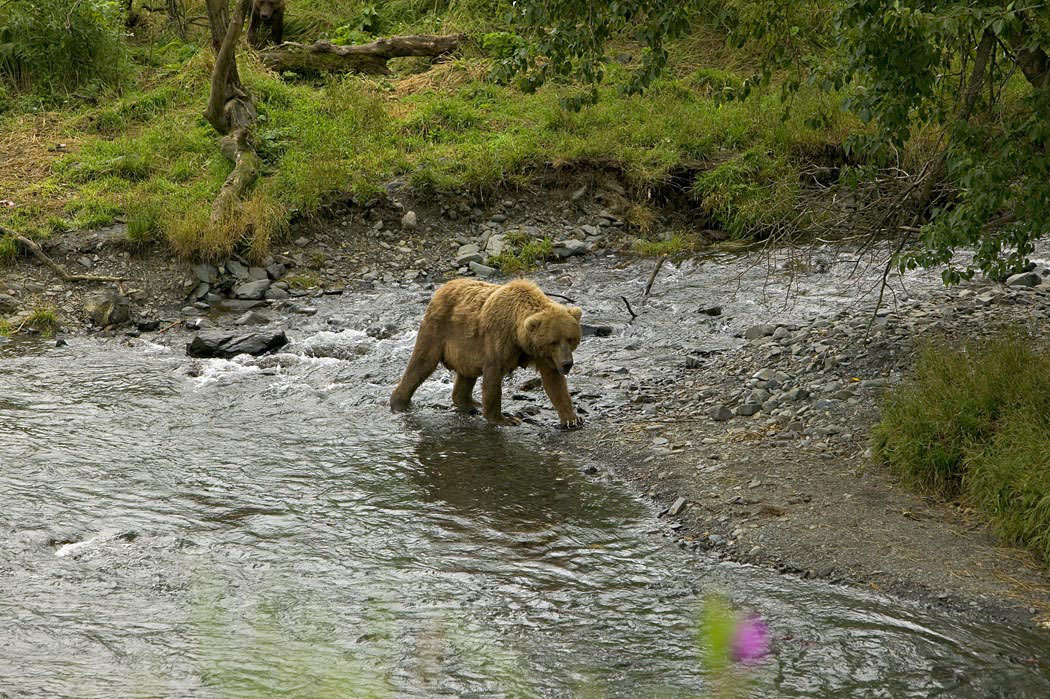7 Iconic American Animals

American Icons

American flags will be flying high on the Fourth of July, and Uncle Sam look-alikes will be out at the fireworks displays. But these symbols aren't the only American icons, which can be found aplenty in the amazing animal species found from sea to shining sea.
From the official symbols, such as the bald eagle, to the animals that conjure a specific piece of Americana, like the grizzly bear, the following animals are true American icons.
Bald Eagle

The quintessential American animal icon. These majestic creatures have a wingspan of about 7 feet (2 meters) and can fly between 75 to 99 mph (121 to 159 kph) in a hunting dive.
Bald eagles are unique to North America and live in coastal and lake areas from Baja California and Florida north to Newfoundland and Alaska.
Bald eagles became endangered due to the combined pressures of habitat destruction, hunting and the use of the poison DDT (used to dust crops), which caused eagle shells to thin and often break before hatching. The ban of DDT and other conservation measures have brought the species back from the brink; the bald eagle was removed from the Endangered Species List in 2007.
The bald eagle became a national emblem in 1785, after a drawing of the eagle was presented to the newly-formed Congress, according the U.S. National Archives. The pick wasn't universally popular though, as Benjamin Franklin preferred another bird. More on that in a bit.
Bison

The bison, informally called a buffalo, is North America's largest land mammal, with adult males typically weighing up to 2,200 pounds (1,000 kilograms). Some 30 million to 60 million of the animals once roamed the Great Plains.
Get the world’s most fascinating discoveries delivered straight to your inbox.
But by the early 1900s, after decades of hunting, bison numbered less than 1,100. In 1905 President Theodore Roosevelt and a diverse group of other Americans established the American Bison Society to save the animal from extinction.
Bison have long been a symbol of the American West, and are a key species in the grassland ecosystem. They are also an important cultural symbol to many Native American groups.
The Wildlife Conservation Society and other groups recently launched a campaign to make the bison the United States' national mammal.
Mountain lion (cougar)

This creature goes by a multitude of names: mountain lion, cougar, catamount, and puma are just a few.
The species was once one of the most widely distributed in the Western Hemisphere, but only western cougars survive in significant numbers, with eastern cougars presumed extinct though still protected by the Endangered Species Act.
Early American settlers thought the mountain lion was a threat to themselves and their livestock and so hunted and trapped them until the cougar was largely wiped out from the region. Recent evidence, such as tracks and camera trap photos, has suggested that the cougar could be re-establishing itself in parts of its former territory in the Midwest.
Prairie dog

Black-tailed prairie dogs (Cynomys ludovicianus) are found only in the grassland prairie of North America, and their little heads popping up from the ground are an indelible image.
An estimated 24 million black-tailed prairie dogs are found across 2.4 million acres of prairie and their historic range includes 11 U.S. states.
The prairie dogs live in underground burrows, and the species emits a wide range of noises to communicate. They are a very social and territorial animal.
The underground tunnels that the prairie dogs dig help aerate the deep roots of the prairie grasses and allow rain water to reach several feet below the surface, making them a key part of the ecosystem.
Wild turkey

If Ben Franklin had had his way, the turkey would have been the national emblem of the United States over the bald eagle. As it is, the turkey gets the "honor" of being the dish of the national holiday, Thanksgiving.
Adult male turkeys, called toms, like to impress the females, called hens, with their tail feather displays. And it may come as a surprise that turkeys can fly, though not fast or high.
Early Americans significantly impacted turkey numbers through hunting, with only about 30,000 wild birds in existence in the 1930s. Conservation efforts have brought those numbers up to about 7 million today. Their range covers the bulk of the eastern half of the United States and parts of the West, extending down into parts of Mexico.
Wild turkeys are usually found in wooded areas and they roost at night in the low branches of trees.
Grizzly bear

Grizzlies are an iconic animal of the western United States. When Lewis and Clark made their great expedition of the West in the early 1800s, there were an estimated 50,000 grizzly bears between the Pacific Ocean and the Great Plains, according to the U.S. Fish & Wildlife Service. But as pioneers moved in, the grizzlies were hunted and their habitat disappeared with the emergence of towns and cities.
Today, grizzly bears thrive in only a few small pockets of habitat, such as in the Yellowstone area, in the lower 48 with an estimated 1,200 to 1,400 wild grizzlies. The species was listed as threatened in the lower 48 states under the Endangered Species Act in 1975.
Grizzly bears, also called brown bears, derive their named from their frosted, or grizzled, coats. They stand about 5 feet (1.5 meters) tall when on all fours and males can weigh up to 1,000 pounds (450 kilograms). They hibernate in the winter in dens and spend a third to a half of their life sleeping like this.
American alligator

he American alligator is one of only two true species of alligator (the other being the Chinese alligator), and an iconic sight in the swamps of the Southeast and Gulf Coast.
American alligators were once on the brink of extinction, but listing as an endangered species in 1987 has allowed them to recover.
Alligators are often seen submerged in the water, with their nostrils poking out. Their nostrils face upward so that they can breathe in this position.
Male American alligators average about 11 feet (3.5 meters) in length, but can grow up to a whopping 20 feet (6 m) long.



